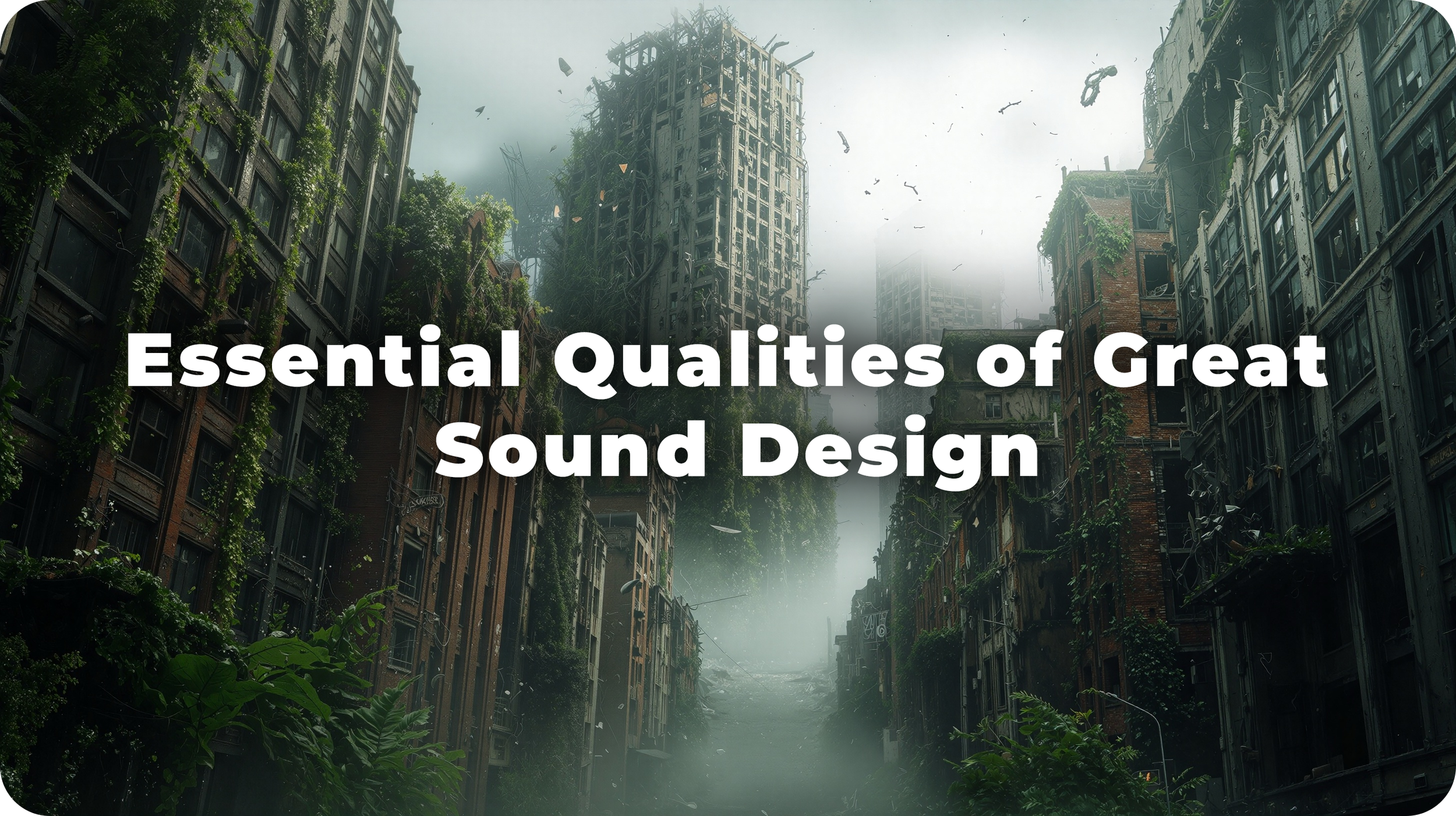Essential Qualities of Great Sound Design
Why Quality Matters in Sound Design
Sound design is more than layering effects or creating noises. It shapes experiences, tells stories, and brings visuals to life. Whether you are working on film, games, or immersive media, three qualities consistently separate good sound from exceptional sound: originality, clarity, and emotion
1. Originality
Originality means crafting sounds that are unique, memorable, and true to your voice. It makes your project stand out and leaves a lasting impression
Why it matters
• Unique sounds capture attention immediately
• They give your project a distinct identity and personality
• Staying true to your style creates consistency across your work
Ways to embrace originality
• Experiment with unconventional sources or recordings. Everyday objects can become extraordinary when processed creatively
• Blend familiar sounds with new textures to create something fresh yet relatable
• Develop a signature approach that reflects your vision and enhances the story
Original sound design is not just about being different. It is about being intentionally distinct in a way that elevates your project
2. Clarity
Clarity is essential for professional sound design. It ensures every element is heard, understood, and contributes to the story. A mix that feels crowded or muddy can distract listeners and lessen the impact
Why it matters
• Clear sound allows every detail to be appreciated
• Balanced frequencies prevent overlapping elements from competing
• Proper spatial placement makes audio feel natural and immersive
Ways to achieve clarity
• Use EQ and panning to give each sound its own space in the mix
• Pay attention to dynamics. Adjust volume levels so elements complement one another rather than overpower
• Test your mix on different playback systems to ensure consistency and balance
Clarity ensures the audience experiences the full impact of your sound, making every moment meaningful
3. Emotion
Sound is a direct line to human emotion. Great sound design does more than accompany visuals. It amplifies the story and guides how the audience feels
Why it matters
• Emotional sound connects the audience to the narrative
• Subtle audio cues can create tension, excitement, or nostalgia
• Music, ambience, and sound effects together transform a scene into an unforgettable experience
Ways to harness emotion
• Use sound to emphasize important moments or transitions
• Layer textures to evoke atmosphere and mood
• Experiment with timing, volume, and tonal shifts to create anticipation or release
When sound design focuses on emotion, it makes the experience immersive, memorable, and impactful
Bringing It All Together
The best sound design combines originality, clarity, and emotion
Originality creates a unique identity for your project
Clarity ensures every element is purposeful and appreciated
Emotion transforms sound into a powerful storytelling tool
Focusing on these three qualities turns sound from background noise into an essential part of the audience experience, elevating your project and making every moment resonate
